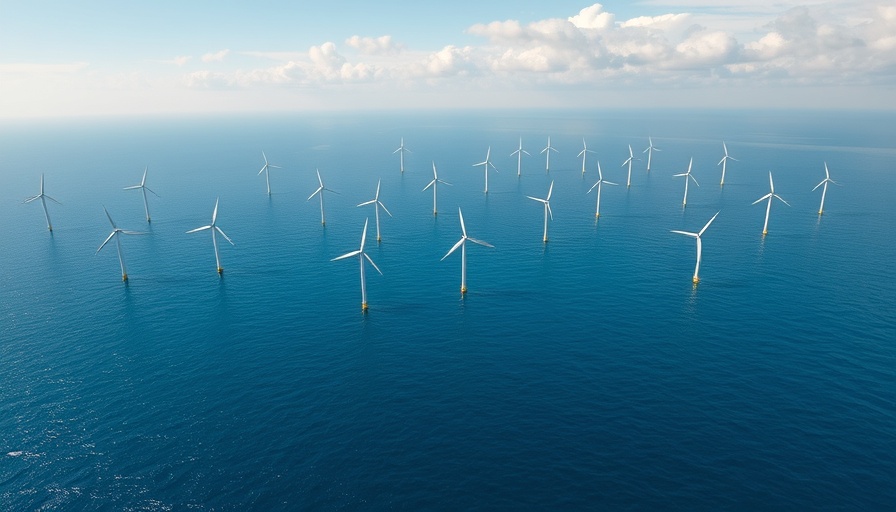
Offshore Wind Farms: A Unique Habitat for Marine Life
As the world increasingly turns to renewable energy sources, researchers are discovering the unexpected benefits of offshore wind farms for marine ecosystems. In new research from Wageningen University & Research, scientists have confirmed that sharks and rays regularly inhabit these structures off the coast of the Netherlands. This finding raises essential questions about the role of offshore wind farms in promoting marine biodiversity.
Understanding the Research Behind the Findings
The study employed an innovative method known as environmental DNA (eDNA) sampling, which allows scientists to detect the presence of marine species without capturing them. Over 436 seawater samples were taken, revealing traces of five different elasmobranch species, with Thornback rays being the most prevalent. According to Annemiek Hermans, a Ph.D. candidate at the university, it’s akin to finding a fingerprint. Even if the researchers could not visually confirm the presence of these creatures, the genetic evidence unequivocally indicated their activity in the area.
The Migration Mystery: Basking Sharks Uncovered
Among the intriguing discoveries made during the study was the detection of basking sharks around the Hollandse Kust Zuid wind farm during winter. Surprisingly, this regional migratory pattern had remained unknown until now. By understanding where these creatures travel, environmentalists can better assess the impact of wind farms on marine life.
Are Wind Farms Supporting Marine Life?
One of the key questions posed by the research is whether sharks and rays are using these offshore wind farms as safe habitats or if they are simply being displaced. With fishing and shipping restricted in these zones, the absence of seabed disturbance may create a haven for smaller fish—an important food source for these apex predators. This potential dynamic suggests an intriguing symbiotic relationship between renewable energy infrastructure and marine biodiversity.
The Importance of Ongoing Research
Despite the promising results, the researchers caution that further investigation is required. As stated in the study, it is crucial to determine if offshore wind farms truly benefit elasmobranch populations or if their presence creates new challenges for marine life. Protecting these zones against seabed-disturbing activities, such as bottom trawling, is vital to preserving the potential safe havens that offshore wind farms may offer.
Lessons for Eco-Conscious Lodging
For boutique hospitality professionals, the study’s findings hold essential implications. As eco-conscious tourism continues to grow, utilizing renewable energy sources like wind power can both bolster your establishment's sustainability and enhance the local ecosystem. By integrating sustainable practices, hoteliers can contribute to a greener future while attracting environmentally aware customers.
Future of Marine Conservation and Renewable Energy
The research opens up exciting possibilities for integrating wildlife conservation into offshore wind energy development. As the demand for clean energy continues to rise, understanding how these installations interact with marine ecosystems will be critical. The hope is that wind farms can evolve from mere energy producers to active participants in fostering marine biodiversity.
Call to Action: Invest in Sustainability
As we march toward a more sustainable future, it’s essential for boutique hospitality professionals to consider the role they play in conservation. Embrace innovative practices that protect marine environments while providing unforgettable experiences for guests.
 Add Row
Add Row  Add
Add 




Write A Comment